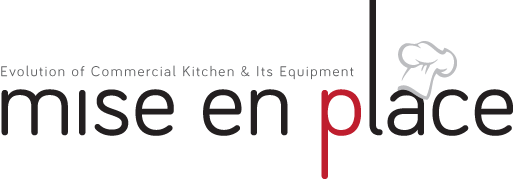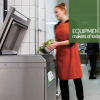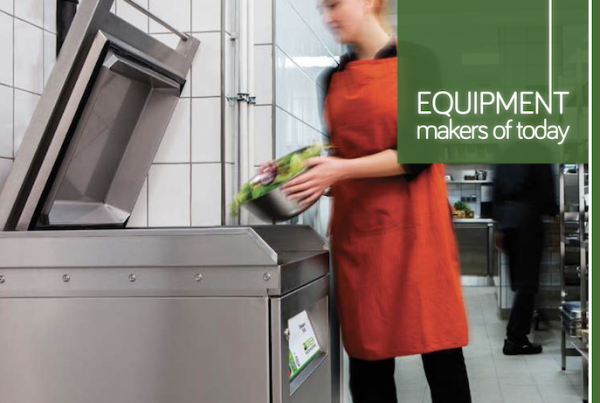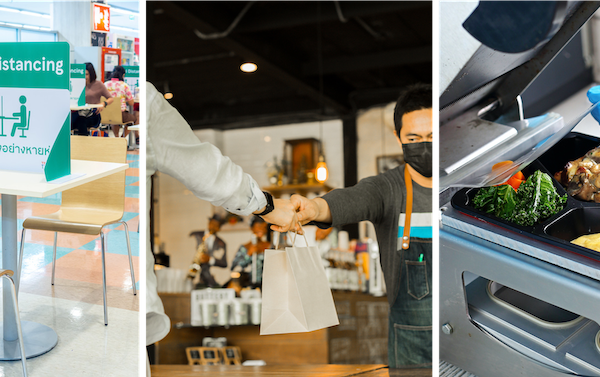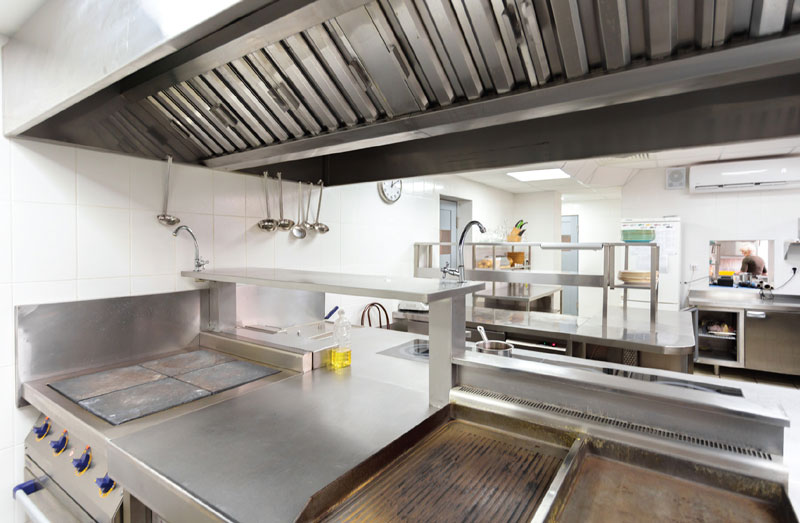
While a restaurant’s front-of-house may have a great ambiance and welcoming staff to serve you, the real magic in this food service establishment really takes place in the back-of-house. As the central command centre of a restaurant, this is where meals are prepared and cooked and culinary masterminds do their best work. However, the back-of-house is also an area that is filled and fitted with all types of commercial equipment and machines that are heavily used daily.
Since the kitchen is where the most amount of food contact occurs, any staff member who enters this area should be trained on food and equipment safety and sanitation. In this segment, we will talk about the types of equipment used according to the areas in the kitchen workspace which includes the cooking area, preparation, service and washing area.
EQUIPPING ON HVAC
A commercial kitchen is not only a challenging environment but it can be a hot air trap especially if the restaurant is in a poorly ventilated building. For food safety and equipment preservation, a commercial kitchen requires heating, ventilation and air-conditioning (HVAC) due to the air being affected by odours and grease, relieve the heat created from convection, meet air quality hygiene requirements, prevent moisture from cooking and washing as well as providing a comfortable work environment. Installing HVAC units provide temperatures that are necessary to capture heat and fumes from cooking equipment and cuts down the strain on other equipment for cleaner air and greater efficiency.
To prevent the heat and impurities produced by cooking appliances spreading to the food and work area, invest in more efficient ventilation systems that not only reduces required airflows but also result in savings in weight, space and energy consumption. For example, for efficient grease filtration, the Halton Capture Jet offers UV-light technology, where most of the grease particles are first filtered with Halton KSA mechanical filtration. The mesh filter behind the KSA spreads and equalizes the airflow into the hood chamber. The remaining grease is then eliminated with UVlight technology, resulting in a clean exhaust ductwork. This helps to reduce a serious fire risk and expensive cleaning of the ducts. Keeping your restaurant cool with HVAC permits you to hold food at safe food-handling temperatures longer.
TURNING UP THE HEAT
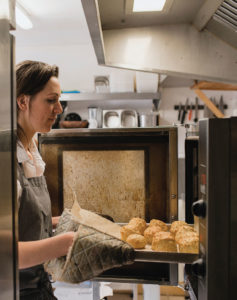 • Combi Oven
• Combi Oven
No longer a stranger to commercial kitchens, professionals have found that combination ovens can serve as the jackof- all-equipment-trades in a commercial kitchen. One combi oven can do the work of a convection oven, braising pan, steamer, holding cabinet, smoker and even a dehydrator. With the ability to cook different products using different cooking methods at the same time; a combination oven has become a choice for high volume food preparation.
It is important to maintain this hard-working equipment as regular maintenance will help keep this restaurant equipment working longer. The drain screen must be frequently checked to ensure that it is in place. Without a drain screen bits of food can build up and block the drain. Water that is fed into a combi oven should always be treated with a filtration system. This will slow mineral deposit buildup in the unit’s water lines. It will also reduce the buildup of scale on a combi oven’s heating units, water probes, and cooking chamber to help it operate as efficiently as possible. Cleaner water also provides improved food taste. The good news is, most combi ovens have their own selfcleaning features such as Welbilt’s Convotherm 4 easyTouch range of combi ovens which features ConvoClean and fully automatic cleaning cycles. Its selectable Eco, Regular and Express cleaning modes produces great cleaning results, while its HygienicCare element of antibacterial surfaces in operating areas, door handles and reoil hand shower further promotes food safety.
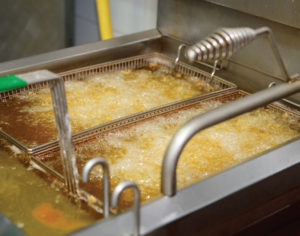 • Deep Fryer
• Deep Fryer
A deep fryer is a must have in most commercial kitchens, especially if hot, crispy items demand high production. Deep frying is very fast and, when performed properly, destroys bacteria. A fryer is programmed with a timer for accuracy in cooking, better heat recovery to allow quicker production and oil filtration capabilities to extend the life of cooking oil. To create everything from French fries to fish and chips, a good quality commercial deep fryer is needed.
Most F&B operators know that oil is often the most expensive component of owning a fryer, and any reduction in usage can make a significant difference over the life of the equipment. In this case, Welbilt’s Frymaster’s oil-conserving fryers are designed to use as much as 40 percent less oil to do the same work as same-sized traditional fryers. Many Frymaster fryers are also available with built-in oil filtration that take most of the labour out of filtering the oil, which is a crucial step to maintaining the taste and safety of your fried products as well as extending the life of the oil.
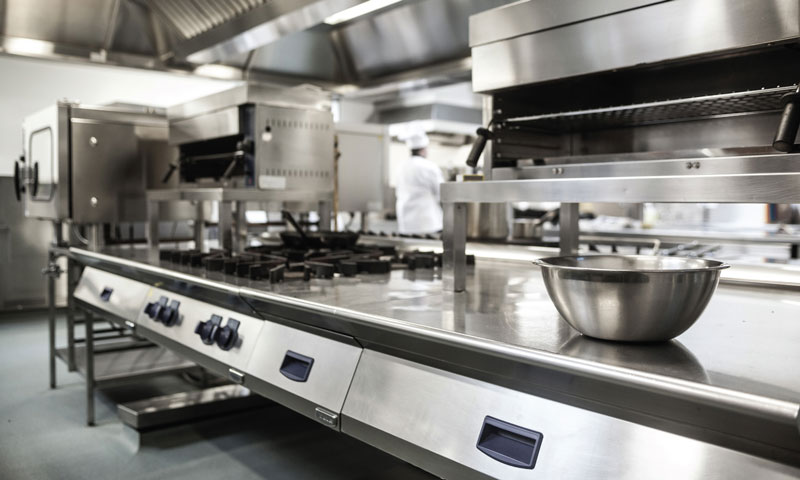
• Kitchen Ranges
If your commercial operation prepares food over an open flame, you’ll need a kitchen range. The range is the powerhouse of the kitchen, so it’s important to choose one that meets both your cooking and aesthetic needs. Like residential ranges, commercial units can be either gas, electric or induction. All cooking ranges regardless of type, must be cleaned for physical health and food hygiene and safety – bacteria can build up in those chunks of minced garlic that never made it into the pan or the chicken broth that spilled over the side of the pot.
A gas cooking range usually has four main components that require cleaning – the grate, the burner caps, the burner heads and the stovetop surface itself. When food spills onto any of these components, the overall performance during the cooking is affected and food can become contaminated. Alternatively, electric ranges have smooth, elegant, easy-to-clean designs and come in one of three sub-categories – standard electric ranges that use coils to heat food, smooth-top electric ranges and electric induction ranges that employ magnetic coils beneath a ceramic glass top to generate heat.
If you prefer an electric cooking range that fits into reduced spaces without sacrificing performance, cleanliness and looks, the Thermaline M2M – Made to Measure by Electrolux could be a good option. With over 40 cooking options, the M2M Foundational features of a thermaline are a result of innovating from the basics to provide users an enhanced experience, including highly visible operations with the control panel and a smooth glass surface for top hygiene.
• Braising Pans
Braising pans, also known as tilting skillets or tilting-frying pans are among the most versatile appliances found in the commercial kitchen. They are used to braise, sauté, broil, roast, boil, fry, griddle, proof, hold, simmer, melt and steam. They can also be used as a steam table to hold warm foods.
Some braising pans like the Electrolux’s High Productivity Cooking Electric Tilting Braising Pan is seamless and has large-radius edges and corners making it easy to clean and eliminating corner food build-up. Its easy-to-clean smooth surface guarantees high levels of hygiene while maintaining an elegant design. The pressure cooking function ensures a big reduction of the cooking time providing high food quality, in other words – better vitamins, minerals and essential nutrients retention. A water mixing tap is also available as optional accessory to make water filling and pan cleaning easier.
STORING FOOD SAFELY
Depending on the type of food, commercial kitchens have to store it in a refrigerator, freezer or in containers that can be kept in cupboards or on shelves. Proper food storage is necessary in order to keep food safe so that it is still safe to be cooked and served to customers.
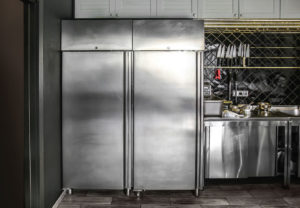 • Refrigerators And Freezers
• Refrigerators And Freezers
A refrigerator or freezer, whether it is an upright reach-in type or an undercounter, plays a huge part in preserving food items at a desired cold temperature. Cold temperatures help food stay fresh longer by slowing down the activity of bacteria so that it takes longer for the bacteria to spoil the food. When choosing the type of refrigerator or freezer for your kitchen, take into account the hygiene and safety aspects of the equipment.
An undercounter refrigerator brings together the preparation and conservation of food in a single equipment. This offers chefs the ability to assemble food faster as the different ingredients can be kept close at hand while also keeping things more organised. One option of an undercounter refrigerator that adheres to practical sanitary guidelines and is easy to clean is the Hoshizaki’s Goldline Undercouner Series. Featuring a detachable gasket, easy access to its removable air filter, round corners and E7 Code that gives out a “clean air filter” message, keeping this undercounter refrigerator clean is made easier. Additionally, its stainless steel finishing keeps rust away and allows the worktop to be safely used as a food preparation area.
When it comes to maintain food quality and hygiene, some businesses have turned to the use of the blast chiller and freezers. Leaving food out to cool before storing them comes with the risk of food contamination. Blast chillers or shock freezers typically cool down hot food to a temperature low enough to inhibit bacterial growth. These units are able to reduce temperature of cooked food from +70 °C (158 °F) to +3 °C (37 °F) or below within 90 minutes for safe storage and consumption.
If time is of the essence, a unit to be considered is IRINOX’s EasyFresh blast chiller that can blast chill and shock freeze food products, even straight out of the oven. EasyFresh’s blast chilling cycles quickly lower the temperature of any food product, thus preserving its consistency, moisture content and nutritional properties. The Irinox patented sanitization system, Sanigen®, sanitizes every part of the chamber, including the areas difficult to access for cleaning. The system’s efficiency guarantees bacteria abatement of 99.5%. Sanigen® also acts to eliminate unpleasant odours that can occur at the end of the work cycle or the working day.
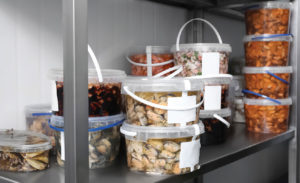 • Shelving And Storage Racks
• Shelving And Storage Racks
A commercial kitchen that has properly organised food shelving and storage racks helps the galley run more productively, safely and efficiently. It can provide an ideal solution for storing various appliances in your kitchen as well as perishable and non-perishable foods. Shelves and storage racks come in a variety of sizes and materials and must be made of durable material that is easy to keep clean. It is important to choose shelves that feature anti- rust/corrosion properties for hygiene and long term investment. Invest in sturdy storage racks that are designed to keep cleaned items away from dirt and dries quickly to avoid moisture build-up.
Choose shelves and storage racks that are made from strong composite materials for years of durability. Although they might not be direct eco-friendly equipment, they keep wares clean so that you can save water, chemicals and electricity from having to re-wash these wares. For a non-corrosive, norust shelving solution that will hold up to the challenging storage demands of commercial F&B operations, you could opt for the CAMBRO Camshelving Elements Series. Its hygienic design offers antimicrobial shelf plates that are totally impervious to moisture, chemicals and liquids that can destroy shelving over time and are easy to clean.
WAREWASHING
Washing is one of the most time-consuming tasks in a commercial kitchen but electric dishwashers and potwashers have made life much easier in recent years.
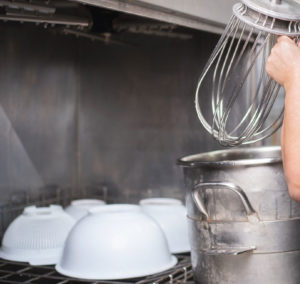 • Dishwashers
• Dishwashers
Commercial dishwashers are essential pieces of equipment in any type of foodservice establishment as they save time and ensure that all the dishes come out clean and sanitized. There are a variety of dishwasher types and sizes in the market today. For example, high temperature dishwashers use heated water to sanitize dishes, while low temperature models, on the other hand, use chemical sanitizing agents to clean dishes. You can also find dishwashers in conveyor styles or rack styles to accommodate high-volume needs.
To keep dishes sparkling and hygienically clean, a good option is Winterhalter’s UC Series dishwasher that perfect wash results over and over again as well as the highest standards of cleanliness, hygiene, quality and reliability. A smart touch display with programme and progress indicator, single-button operation and ergonomic door handle keeps this dishwasher user friendly. It is also easy to clean, with two wash fields that can be removed with one hand at the push of a button.
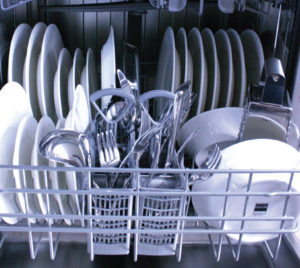 Pots, gastronorm pans or other unusually sized crockery do not fit into dishwashers and stewards usually wash them by hand. The task would require overnight soaking and hard scrubbing which takes up time and resources. With improvement in technology, pot and pan dishwashers have been designed for large-sized items and come with high-pressure wash systems to get rid of stubborn food residue in lesser number of cycles. This also means the units need higher voltage to support its operation thus, it is important to check the electrical system’s capacity before committing to a unit.
Pots, gastronorm pans or other unusually sized crockery do not fit into dishwashers and stewards usually wash them by hand. The task would require overnight soaking and hard scrubbing which takes up time and resources. With improvement in technology, pot and pan dishwashers have been designed for large-sized items and come with high-pressure wash systems to get rid of stubborn food residue in lesser number of cycles. This also means the units need higher voltage to support its operation thus, it is important to check the electrical system’s capacity before committing to a unit.
On another front, for a pure Gastronom kitchen, Granule Flexi by Granuldisk provides a much suitable solution. This front-loaded No Pre-Washing™ pot washer incorporates the innovative Granule technology and eliminates the need for pre-wash. With food safety in mind, all Granule Flexi wash programs comply with the hygiene guidelines of the DIN 10512 standard.
From the equipment viewpoint, there is still much to be covered when it comes to the role they play in helping you to maintain good hygiene practices for your operation. However, the effectiveness all comes down to the behaviour and attitude of the management and staff. The best equipment in the market cannot guarantee you automatic hygiene standards but with the right mind and approach to tackling hygiene matters in your operations, any equipment can fill the role.
